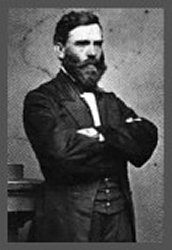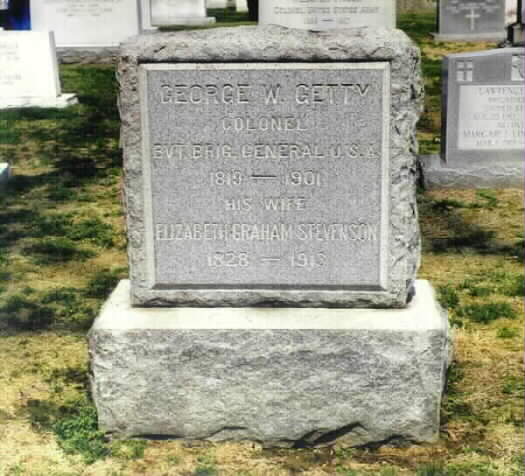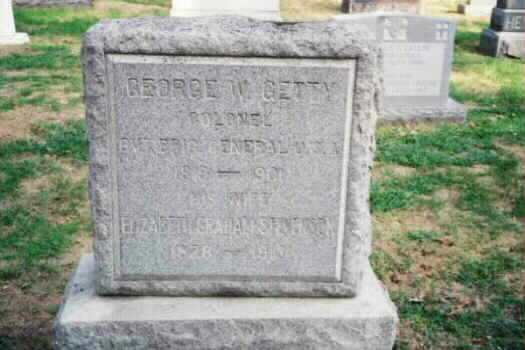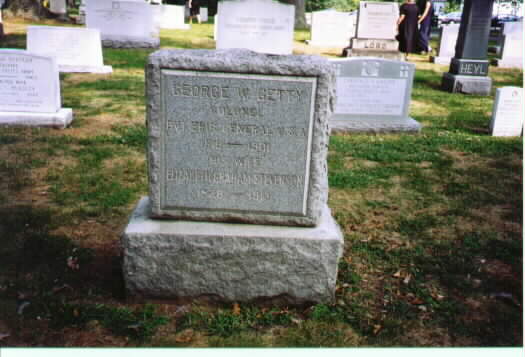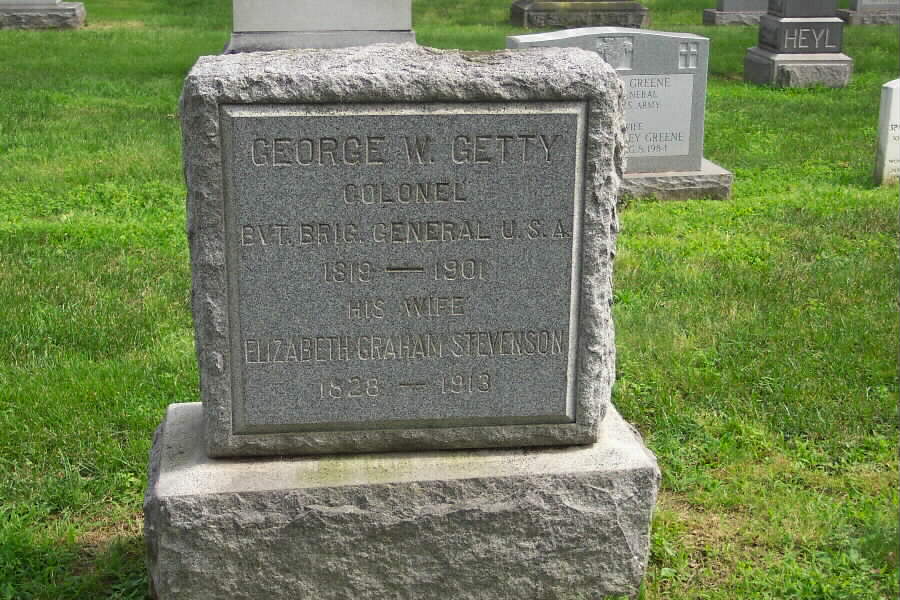Born at Georgetown, D.C., October 2, 1819, he was appointed to West Point at the age of 16 and for the next 48 years made the Army his career. Of the class of 1840’s 42 graduates, in which he stood 15th, it numbered among it such figures as William T. Sherman and George H. Thomas of the Union Army and Richard S. Ewell, John P. McCown, Bushrod R. Johnson, J. G. Martin, William Steele and Thomas Jordan of the Confederacy.
He was breveted for gallantry in the Mexican War, where he campaigned with Winfield Scott as an Artillery Lieutenant. He fought against the Seminole Indians in Florida in 1849-50 and again in 1856-57. At the begining of the Civil War he was a Captain, 4th U.S. Artillery. In September 1861, he was appointed Lieutenant Colonel and additional Aide-de-Camp in the volunteer service and commanded 4 batteries in the Peninsular Campaign of 1862. He also fought at South Mountain and Sharpsburg during the Confederate invasion of Maryland, acting as Chief of Artillery in Ambrose Burnside’s IX Corps. Promoted to Brigadier General of Volunteers to rank from September 25, 1862, and at Fredericksburg he commanded the 3rd Division of IX Corps. In March 1863, the Division was sent to Suffolk, where the Federal Army under John A. Dix successfully resisted James Longstreet’s investment of the town, which guarded the southern approaches to Norfolk and Hampton Roads.
After subsequent engineering duty and command of a diversion to the South Anna River during the Gettysburg Campaign, he served as acting Inspector General of the Army of the Potomac in early 1864 and was then assigned a Division of VI Corps, which he led in the Wilderness (where he was badly wounded), at the seige of Petersburg, and in Philip Sheridan’s Shennandoah Valley Campaign. His Division made the initial breakthrough at Petersburg on April 2, 1865, and took part in the final campaign which terminated in the surrender of Robert E. Lee at Appomattox. He was breveted Major General, U.S. Volunteers, August 1864, and in the Regular Service in March 1865.
After the war, he was appointed Colonel of the 38th Infantry in 1866, transferred to the 3rd Artillery in 1871, commanded the Artillery School at Fortress Monroe, Virginia for six years and was a member of the Board of Conduct which exonerated Fitz John Porter in 1879.
After he retired from the Army in 1883, he lived on a farm near Forest Glen, Maryland, where he died on October 1, 1901. He was buried in Section 1 of Arlington National Cemetery. His wife, Elizabeth Graham Stevenson (1828-1913) is buried with him.
George Washington Getty, soldier, born in Georgetown, D. C., 2 October, 1819. He was graduated at the United States military academy in 1840, assigned to the 4th artillery, and served at Detroit during the border disturbances of that year. After doing garrison duty at various posts, he was promoted to 1st lieutenant on 31 October, 1845. During the Mexican war he was brevetted captain, 20 August, 1847, for gallantry at Contreras and Churubusco, and was also engaged at Molino del Rey, Chapultepec, and the assault and capture of the City of Mexico. From this time till the civil war he was in various garrisons, but fought against the Seminoles in 1849-’50 and 1856-‘7, and took part in quelling the Kansas disturbances of 1857-58.
He was made aide-de-camp, with the rank of lieutenant colonel, on 28 September, 1861, commanded the artillery in the engagements near Budd’s Ferry in November and December of that year, and in the peninsular campaign of 1862 commanded four batteries at Yorktown, Gaines’s Mills, and Malvern Hill. He was at South Mountain and Antietam, was made Brigadier General of volunteers on 25 September, 1862, and took part in the Rappahannock campaign of 1862-‘3, being engaged at Fredericksburg and in the defense of Suffolk, Virginia, from 11 April till 3 May, and receiving the brevet of lieutenant colonel on 19 April for his services. He was brevetted colonel for gallantry at the battle of the Wilderness, where he was severely wounded, served in the defense of Washington in July, 1864, and in the Shenandoah campaign, being brevetted Major General of volunteers, 1 August, 1864, for his services at Winchester and Fisher’s Hill, and Brigadier General in the regular army for gallantry at Petersburg. He was at Lee’s surrender, and on 13 March, 1865, was brevetted Major General, United States army, for services during the war.
He became Colonel of the 37th infantry on 28 July, 1866, was transferred to the artillery in 1870, and afterward served in command of various districts and posts. He commanded the troops along the Baltimore and Ohio railroad during the riots of 1877, and, on 2 October, 1883, was retired from active service.
The following relatives are also buried in Section 1 of Arlington National Cemetery:
Charles McClure, Colonel, United States Army, and his wife Annie Getty McClure; his grandson, Charles McClure, Jr., First Lieutenant, United States Army, his grandson, Gibson McClure, Second Lieutenant, United States Army; his daughter, Maud Getty Walsh, the mother of Orville E. Walsh, Brigadier General, United States Army.
Michael Robert Patterson was born in Arlington and is the son of a former officer of the US Army. So it was no wonder that sooner or later his interests drew him to American history and especially to American military history. Many of his articles can be found on renowned portals like the New York Times, Washingtonpost or Wikipedia.
Reviewed by: Michael Howard

